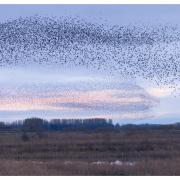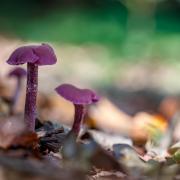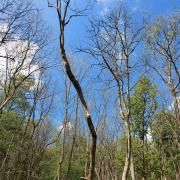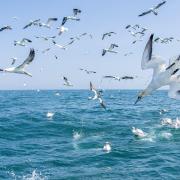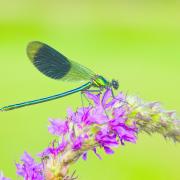A scheme to nurture and protect woodland birds in Yorkshire is beginning to take shape as Richard Darn reports
The print version of this article appeared in the April 2012 issue of Yorkshire Life
We can deliver a copy direct to your door – order online here
Tree pipit, wood warbler, redstart and woodpecker are woodland birds which evoke a sense of the Yorkshire countryside in all its glory. But they face a very uncertain future. Figures suggest the UK’s woodland bird population has fallen by 20 per cent in last quarter of a century, whilst the lesser redpoll and willow tit populations have dipped by over 50 per cent since the 1960s. So what’s the problem?
Experts say that many of our woods are just not being managed. Some are left untouched for decades and have become dense, dark and uninviting for wildlife. Crispin Thorn, area director with the Forestry Commission in Yorkshire and North East, said: ‘It seems counter-intuitive, but a cycle of chopping down trees and replanting is actually good news for wildlife - it creates habitats and adds dynamism to the environment.
Historically, most woods in Yorkshire, even small ones, were actively managed, creating plenty of niches for birds to exploit.‘But these days far too many rarely see significant human intervention, such as tree thinning, coppicing or grazing. The fallout from that is a decline in suitable habitats, resulting in a reduction in woodland bird numbers.’
The Forestry Commission, alarmed by the statistics, joined forces with RSPB, the British Trust for Ornithology (BTO) and Natural England among others to undertake a wide ranging survey to map key breeding areas for vulnerable woodland birds. It emerged that South Yorkshire was a hotspot for up to 15 breeding species.
Armed with this information, the Forestry Commission and the RSPB launched a ground-breaking grant scheme to get woods back into management to create new habitats for birds. Crispin Thorn added:
‘Forget preconceptions of a predominantly industrial landscape. South Yorkshire is actually one of the most wooded parts of the county, with trees covering 7.4 per cent of the total land area. About one third is also ancient woodland - an incredibly valuable habitat for birds. ‘Using the new mapping data, we have been able to target grants to suit the needs of specific species in areas where we know with certainty they are present.’
The grants have been running for the past three years and in that time 16 schemes have been supported with �566,000, embracing 1,000 hectares (2,500 acres) of woodland.
Takers include Peter Earnshaw, from Midgley, keen to revitalise woods near West Bretton on the border with West Yorkshire. His ancestor, Job Earnshaw, established a timber business nearby in 1860 and Peter has continued the family tradition with a successful saw milling and fencing concern. He explained: ‘I’m a keen bird watcher, so it’s good to put something back into the environment to help endangered species.
Enhancing woodland rides improves a prime habitat for birds and also allows us to manage the wood more effectively by creating better access.’ Birds set to benefit from Peter’s foresight include lesser spotted woodpecker, hawfinch, spotted flycatcher, marsh tit, lesser redpoll and woodcock.
Elsewhere, Sheffield Wildlife Trust was granted �90,000 for extensive work in Greno Woods, Sheffield. This spectacular 169 hectare (422 acre) site nestling in the Pennine foothills richly rewards a visit and is one of the most important woods in the area for wildlife. Mapping revealed it to be a prime spot for target species like lesser spotted woodpecker, wood warbler, spotted flycatcher, redpoll and garden warbler. Now it is being carefully tendered by thinning dense forestry, coppicing, cutting back vegetation and improving the heathland.
Chris Grice, Forestry Commission woodland officer for South Yorkshire, added: ‘The woodland bird scheme is a great example of joined up thinking and working. Together with other organisations, we have identified bird hotspots, then in partnership with landowners, targeted grants to shape the habitat to the need of local species. It’s aiming support where it will deliver the greatest benefit. It is really positive to see woodland owners in South Yorkshire looking at how to reinvigorate their woodlands.’
If the reward for all the hard work is a revitalised dawn chorus then anyone who loves Yorkshire’s countryside will rejoice. But it’s not just the poetry and beauty of bird song that makes woodland birds so important. According to the Government they are a barometer for the health of the wider environment. If they are doing well, then Mother Nature really does have something to sing about.











